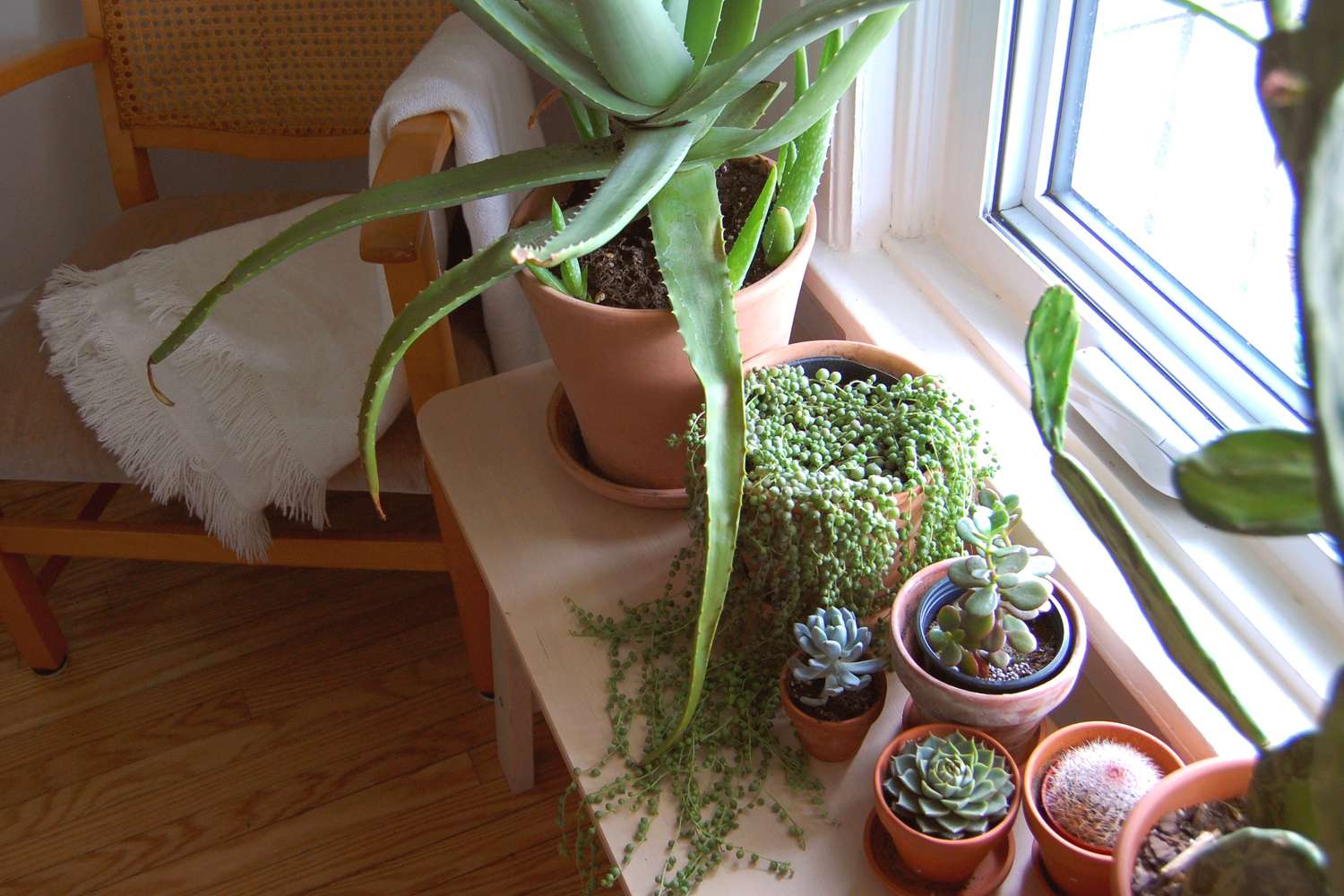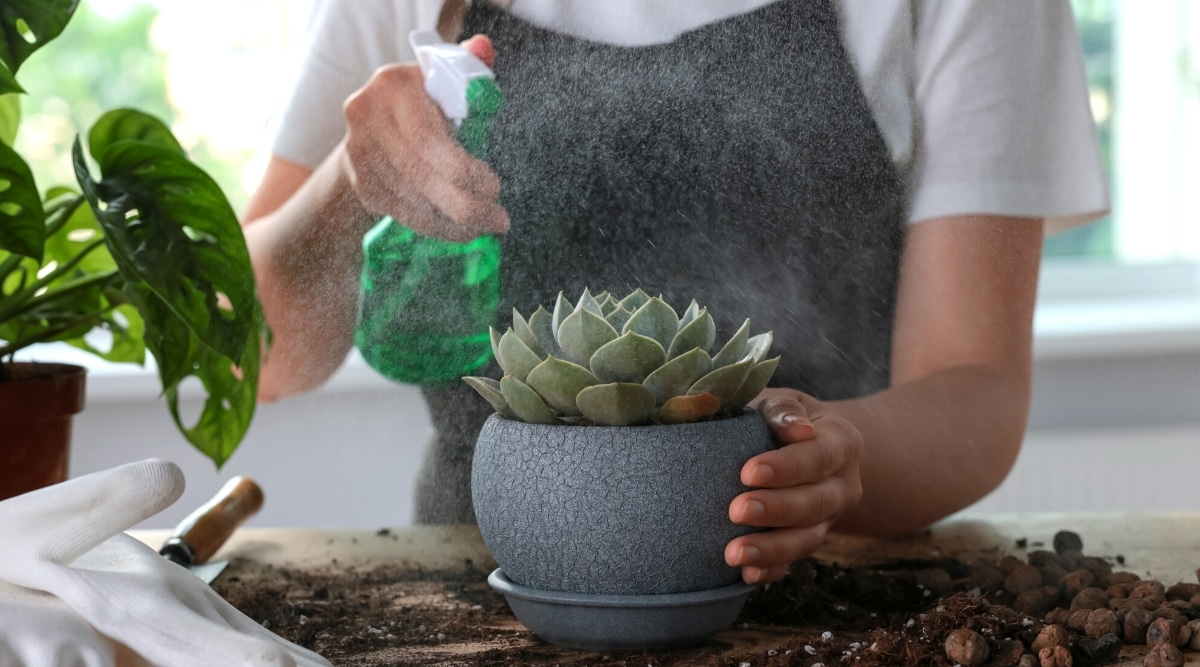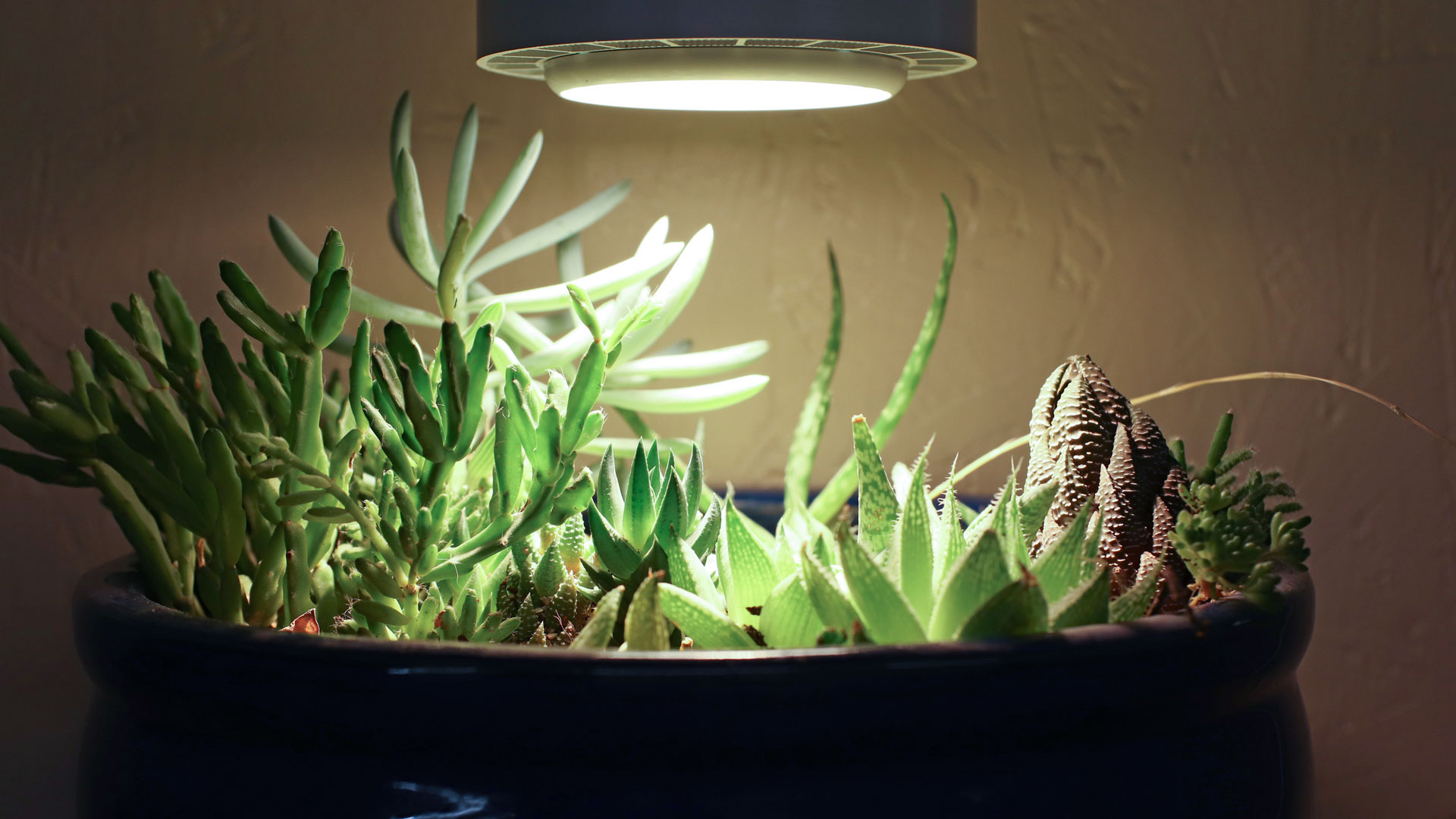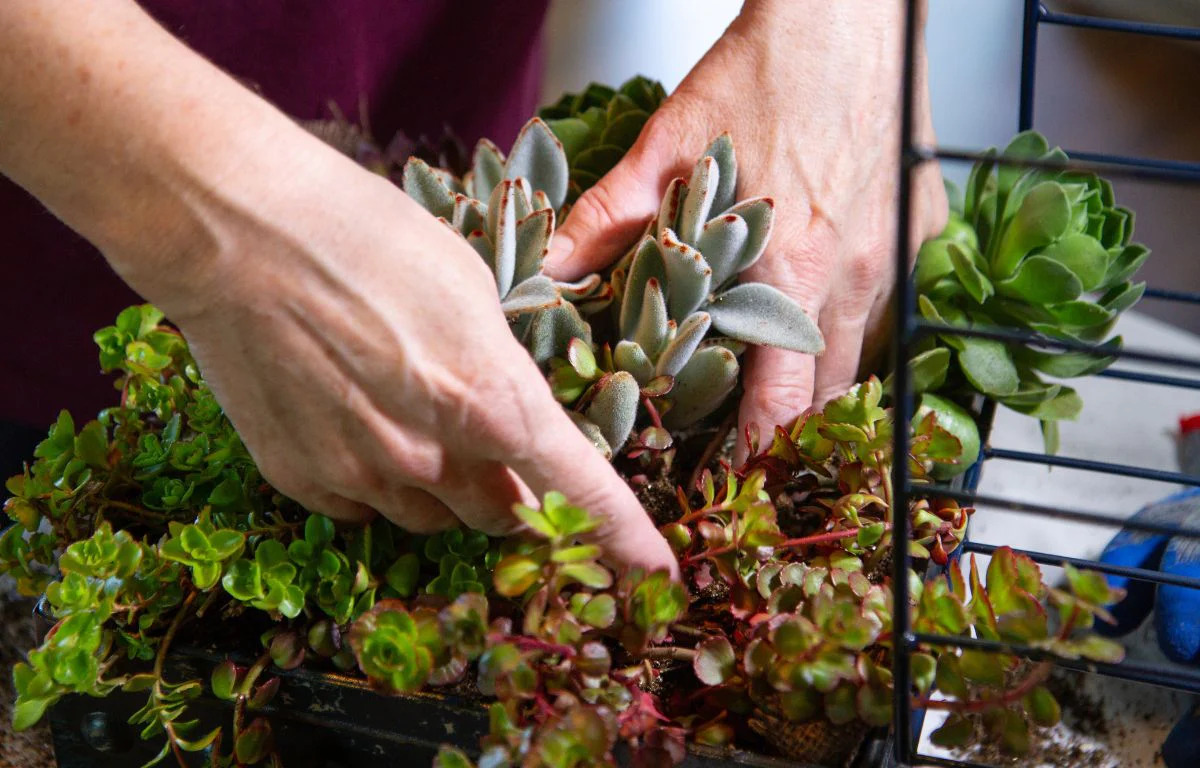Home>Types of Gardening>Ornamental Gardening>What Succulents Don’t Need Sunlight
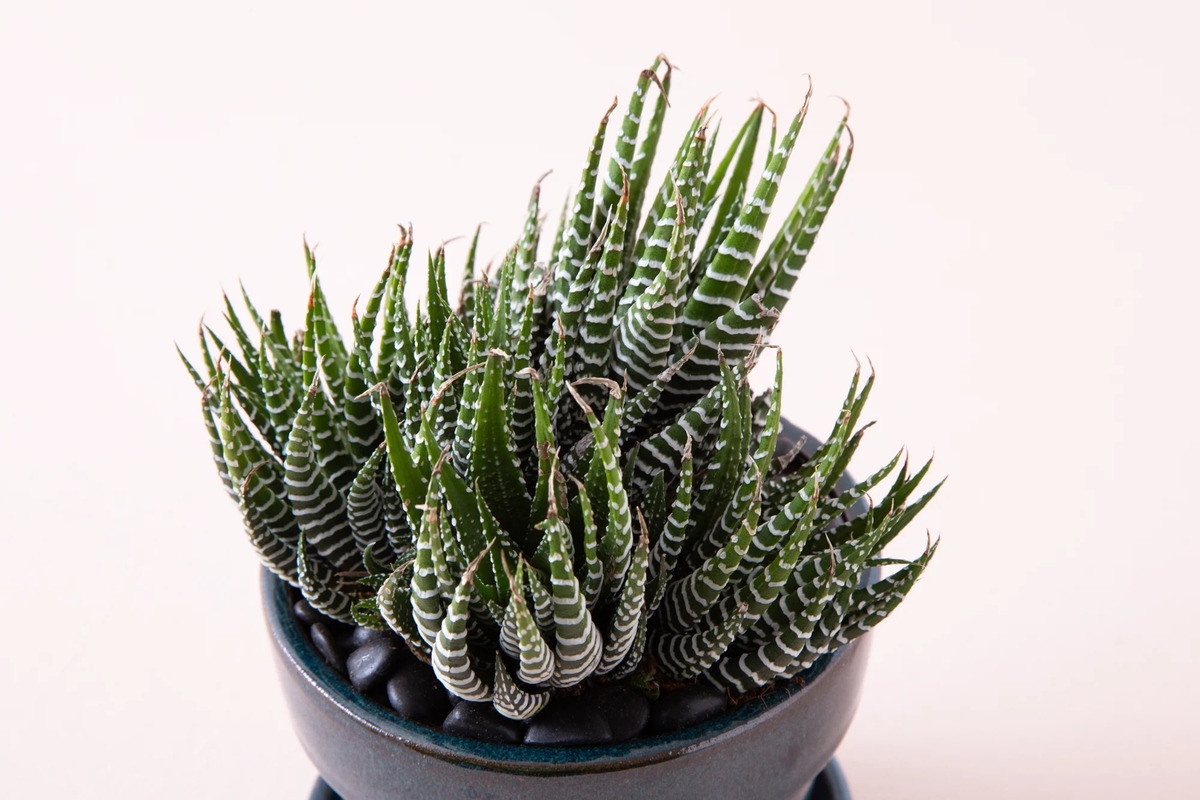

Ornamental Gardening
What Succulents Don’t Need Sunlight
Modified: January 22, 2024
Discover the secrets of successful ornamental gardening with these low-light loving succulents that thrive without direct sunlight.
(Many of the links in this article redirect to a specific reviewed product. Your purchase of these products through affiliate links helps to generate commission for Chicagolandgardening.com, at no extra cost. Learn more)
Table of Contents
Introduction
Welcome to the wonderful world of succulents! These fascinating plants have gained immense popularity among gardening enthusiasts due to their unique appearance and low-maintenance nature. Succulents are known for their ability to store water in their leaves, stems, and roots, enabling them to thrive in arid conditions. While they are often associated with sunny and dry climates, many succulent species can adapt to various lighting conditions, including those that don’t receive direct sunlight.
In this article, we will explore the lighting requirements of succulents and dispel common myths surrounding their sunlight needs. We will also provide helpful tips on alternative light sources and proper care for indoor succulents. Whether you’re a newbie gardener or a seasoned plant lover, you’ll find valuable insights here that will ensure your succulents thrive in any lighting situation.
So, if you’re ready to dive into the world of succulents and discover how to keep them happy and healthy, let’s get started!
Understanding Succulents
Before we delve into the lighting requirements of succulents, it’s important to have a basic understanding of these incredible plants. Succulents belong to a diverse group of plant species that have evolved to survive in dry and arid environments. Their unique adaptation is the ability to store water in their foliage, stems, and roots, allowing them to withstand long periods without rainfall.
One of the key features of succulents is their fleshy leaves, which often have a waxy or hairy coating. This adaptation helps to minimize water loss through transpiration, enabling the plants to retain moisture more effectively. The thickened leaves also serve as reservoirs for water storage, ensuring that succulents can survive in environments with limited access to water.
Another remarkable characteristic of succulents is their ability to tolerate a wide range of temperatures. While they are most commonly associated with hot, desert-like climates, many succulent species can withstand both extreme heat and freezing temperatures. This adaptability makes them excellent options for both indoor and outdoor gardens in different regions.
Succulents come in various shapes, sizes, and colors, adding an aesthetic appeal to any garden or indoor space. From the iconic rosette-shaped Echeveria to the striking paddle-like leaves of the Jade plant, there is a succulent for every style and preference.
Whether you’re an avid collector or a beginner gardener, succulents offer a rewarding and visually captivating experience. With their unique biology and characteristics, they bring a touch of nature’s ingenuity to our homes and gardens.
Natural Lighting Requirements
Succulents thrive in bright and indirect sunlight, making them ideal for outdoor gardens or areas with ample natural light. Most succulents require at least 4-6 hours of sunlight each day to maintain their vibrant colors and healthy growth. However, it’s important to note that not all succulents thrive in direct sunlight, especially those with lighter-colored or more delicate leaves.
When it comes to placing your succulents outdoors, it’s best to choose a location that receives morning or late afternoon sun, as the midday sun can be too intense and lead to sunburn or heat stress. If your garden doesn’t have the ideal lighting conditions, you can provide shade during the hottest parts of the day using a shade cloth or by placing your succulents under a tree or patio cover.
For indoor succulents, finding the right balance of natural light can be a bit more challenging. Ideally, place your succulents near a south-facing window where they can receive the most sunlight throughout the day. East-facing windows are also a good option as they provide gentle morning sunlight. If you have limited access to natural light, consider supplementing it with artificial light sources, which we will discuss in detail later in this article.
It’s important to note that succulents may stretch or become leggy if they don’t receive enough sunlight. This occurs when they don’t get adequate light and start reaching out to find it. If you notice your succulents becoming elongated or stretching towards a light source, it’s a sign that they need more sunlight.
Overall, providing the proper balance of natural light is essential for the health and vitality of your succulents. Paying attention to their lighting requirements will ensure they flourish and continue to grace your spaces with their beauty.
Common Myths about Sunlight
When it comes to succulents and sunlight, there are several common misconceptions that can lead to confusion and potentially harm your plants. Let’s debunk some of these myths and provide you with the correct information to ensure the well-being of your succulents:
-
Myth: Succulents need full sun all day.
While it’s true that succulents need bright light, not all species thrive in full sun all day long. Direct and intense sunlight can actually cause sunburn or scorching on the leaves of certain succulents, especially those with lighter or thinner foliage. It’s best to provide them with bright, indirect sunlight for a few hours each day and some shade during the hottest parts of the day.
-
Myth: Succulents can survive in low-light conditions.
Succulents are adapted to thrive in arid environments, which means they have a high tolerance for sunlight. While some succulents can tolerate lower light levels for a short period, they cannot thrive or grow properly without sufficient light. Insufficient light can lead to leggy growth and a lack of vibrant colors.
-
Myth: Succulents can survive with artificial light alone.
While artificial light can supplement natural light, it cannot fully replace it. Succulents require the full spectrum of light wavelengths provided by natural sunlight to carry out essential photosynthesis processes. Artificial light should be used as a supplemental source in combination with natural light or as a temporary solution when natural light is limited.
By understanding the truth behind these myths, you can provide the right amount of light for your succulents, ensuring their optimal growth and longevity.
Alternative Light Sources
If you find yourself without access to sufficient natural light for your succulents, don’t worry! There are alternative light sources that can effectively meet their lighting needs. Here are a few options to consider:
-
Grow Lights:
Grow lights are specially designed to provide the right spectrum of light necessary for plant growth. LED grow lights are the most popular choice among indoor gardeners as they are energy-efficient and produce little heat. When choosing grow lights, look for ones that emit a full spectrum of light, including blue and red wavelengths, to support photosynthesis and overall plant health. Place the lights a few inches above your succulents and adjust the duration of light exposure based on the specific needs of your plants.
-
Fluorescent Lights:
Fluorescent lights are another option for providing artificial light to your succulents. They are readily available, cost-effective, and emit a reasonable spectrum of light for plant growth. However, keep in mind that fluorescent lights may not be as powerful as LED grow lights, so you may need to keep them closer to your plants or use multiple bulbs to ensure adequate light coverage.
-
Incandescent Lights:
Incandescent lights are not the ideal choice for succulents as they emit mostly warm light and can generate excess heat. However, if you have no other options available, you can use them as a temporary solution. Place the incandescent light several inches above your succulents and monitor the temperature to prevent any heat damage.
When using artificial light sources, it’s important to mimic the natural lighting conditions as closely as possible. Provide your succulents with 12-14 hours of light per day, replicating the timing and intensity they would receive in their natural environment. Keep in mind that each succulent species may have slightly different lighting requirements, so it’s essential to research and adjust accordingly.
Remember, while alternative light sources can help sustain your succulents, they should be used in conjunction with the natural light available. A combination of natural and artificial light will ensure optimal growth and vibrant colors in your succulent collection.
Indoor Care for Succulents
When it comes to caring for succulents indoors, there are a few key factors to consider to ensure their well-being. Here are some important tips for indoor succulent care:
-
Lighting:
As mentioned earlier, finding the right lighting conditions for indoor succulents is crucial. Place them near a south-facing window where they can receive bright, indirect sunlight for several hours each day. If natural light is limited, supplement it with artificial light sources such as LED grow lights to ensure they receive the necessary light spectrum for growth.
-
Temperature:
Succulents generally prefer temperatures between 60-75°F (15-24°C). Avoid placing them near drafts or in areas with extreme temperature fluctuations. Additionally, make sure to keep them away from heating vents or other sources of hot air that can cause the soil to dry out quickly.
-
Watering:
One of the most important aspects of succulent care is proper watering. The frequency of watering for indoor succulents will depend on factors such as the specific succulent species, the size of the pot, and the surrounding humidity levels. As a general rule, allow the soil to dry out completely between waterings and then water thoroughly, ensuring the excess water drains out from the bottom of the pot. Overwatering can lead to root rot, so it’s important to avoid letting the roots sit in soggy soil.
-
Soil and Potting:
Use a well-draining soil mix specifically designed for succulents and cacti. These mixes often contain a combination of materials such as perlite, sand, and peat moss. Make sure the pots have drainage holes to prevent water from accumulating at the bottom, which can lead to root rot. Repot your succulents as needed, usually every 1-2 years, to provide fresh soil and adequate space for their growing roots.
-
Humidity:
Succulents prefer low humidity, so it’s important to provide good air circulation and avoid excessively humid environments. If the air in your home is too moist, use a dehumidifier or place a fan near your succulents to promote air movement and prevent fungal growth.
By following these indoor care tips, you can ensure that your succulents remain healthy and thrive in their indoor environment.
Maximizing Sunlight Exposure
If you have succulents in your outdoor garden or have access to ample natural light indoors, you can take steps to maximize their sunlight exposure. Here are some tips to help your succulents make the most of the available sunlight:
-
Positioning:
Observe the path of the sun in your garden or home and position your succulents accordingly. Place them in areas where they can receive the most sunlight without being exposed to the intense midday sun. This might mean placing them on windowsills or orienting them towards the sun’s trajectory in your garden.
-
Reflective Surfaces:
Utilize reflective surfaces such as mirrors or white stones to redirect sunlight towards your succulents. These surfaces can bounce and reflect sunlight onto the leaves, helping to maximize their exposure. Ensure that the reflective surfaces do not create hotspots or magnify the sunlight, which can lead to overheating or sunburn.
-
Rotational System:
If you have outdoor succulents in pots, consider implementing a rotational system. Every few weeks, rotate the pots to ensure all sides of the plants receive equal sunlight. This prevents one side of the plant from growing towards the sun while the other remains shaded.
-
Pruning:
Regularly prune any nearby trees or shrubs that may cast shade over your succulents. This allows more sunlight to reach your plants and ensures they receive the optimal lighting conditions they require.
-
Clean Leaves:
Keep the leaves of your succulents clean and free from dust and debris. Dirty leaves can hinder the absorption of sunlight. Gently wipe the leaves with a damp cloth to remove any accumulated dust.
By implementing these strategies, you can make the most of available sunlight and provide your succulents with the ideal lighting conditions for their growth and well-being.
Conclusion
Succulents are remarkable plants that have captured the hearts of many gardening enthusiasts due to their unique beauty and low-maintenance nature. Understanding their lighting requirements is essential for ensuring their health and vitality.
While succulents are often associated with sunny and dry environments, it’s important to note that not all succulents thrive in direct sunlight. Some succulents can adapt to various lighting conditions, including those that don’t receive direct sunlight. By providing bright, indirect sunlight for a few hours each day, or supplementing with artificial light sources, you can create the ideal lighting environment for your succulents.
Dispelling common myths about succulents and sunlight is crucial for their well-being. Remember that succulents do not require full sun all day, can’t survive in low-light conditions indefinitely, and artificial light should be used as a supplement, not a substitute for natural light.
Indoor care for succulents involves finding the right balance of lighting, temperature, watering, soil, and humidity. By paying attention to these factors, you can ensure that your indoor succulents thrive and maintain their vibrant colors.
If you have access to ample sunlight, maximizing its exposure for your outdoor succulents can be achieved through strategic positioning, utilizing reflective surfaces, employing a rotational system, pruning, and keeping the leaves clean.
In conclusion, understanding the lighting requirements of succulents is the key to their successful growth and longevity. Whether indoors or outdoors, providing the right amount and quality of light is essential for their overall health and aesthetic appeal. So, whether you’re a seasoned succulent lover or new to the world of ornamental gardening, by following these guidelines, you can create a thriving environment for your succulents and enjoy their beauty for years to come.
